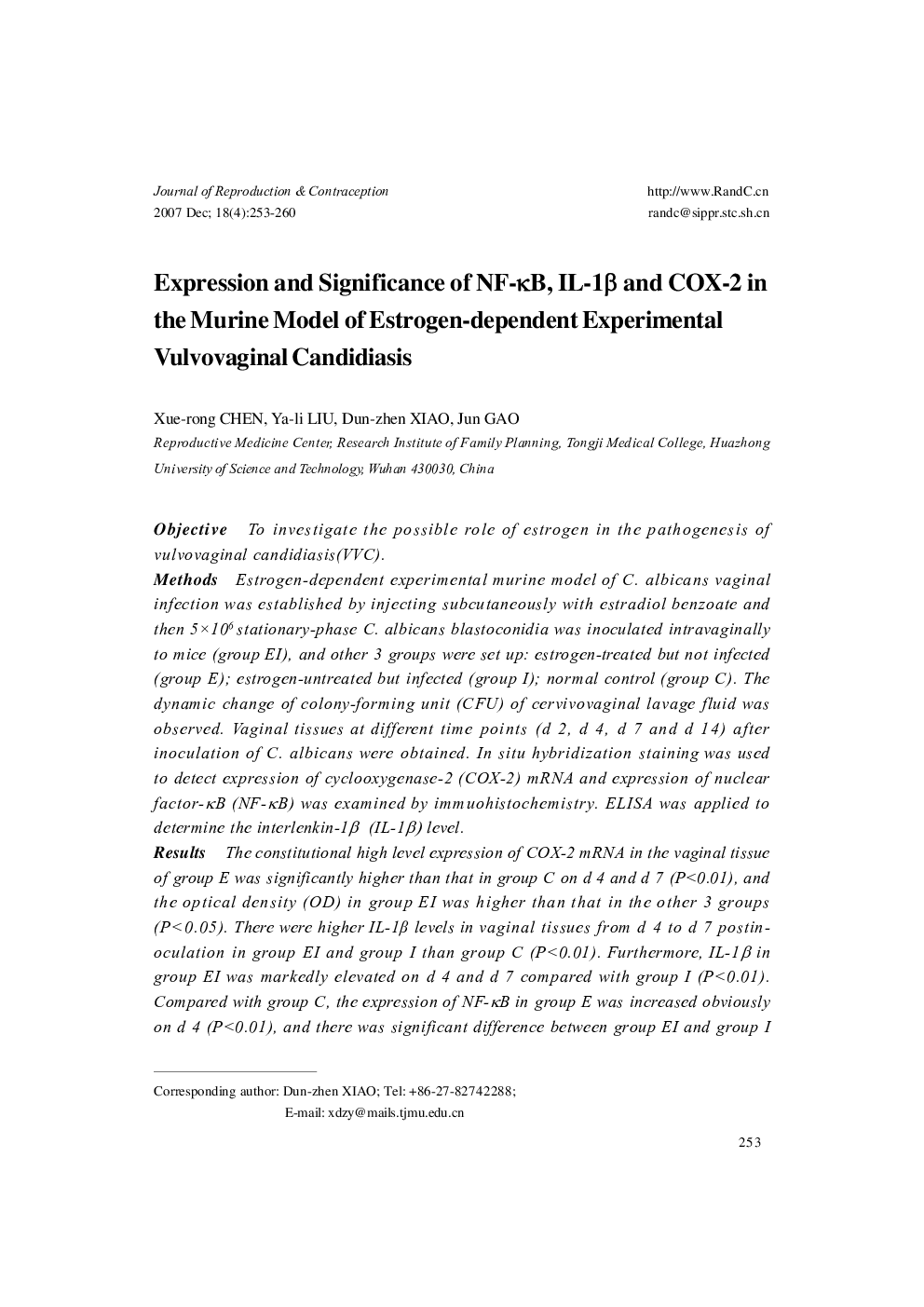| Article ID | Journal | Published Year | Pages | File Type |
|---|---|---|---|---|
| 3961050 | Journal of Reproduction and Contraception | 2007 | 8 Pages |
ObjectiveTo investigate the possible role of estrogen in the pathogenesis of vulvovaginal candidiasis(VVC).MethodsEstrogen-dependent experimental murine model of C. albicans vaginal infection was established by injecting subcutaneously with estradiol benzoate and then 5×106 stationary-phase C. albicans blastoconidia was inoculated intravaginally to mice (group EI), and other 3 groups were set up: estrogen-treated but not infected (group E); estrogen-untreated but infected (group I); normal control (group C). The dynamic change of colony-forming unit (CFU) of cervivovaginal lavage fluid was observed. Vaginal tissues at different time points (d 2, d 4, d 7 and d 14) after inoculation of C. albicans were obtained. In situ hybridization staining was used to detect expression of cyclooxygenase-2 (COX-2) mRNA and expression of nuclear factor-κB (NF-κB) was examined by immuohistochemistry. ELISA was applied to determine the interlenkin-1β (IL-1β) level.ResultsThe constitutional high level expression of COX-2 mRNA in the vaginal tissue of group E was significantly higher than that in group C on d 4 and d 7 (P<0.01), and the optical density (OD) in group EI was higher than that in the other 3 groups (P<0.05). There were higher IL-1β levels in vaginal tissues from d 4 to d 7 postinoculation in group EI and group I than group C (P<0.01). Furthermore, IL-1β in group EI was markedly elevated on d 4 and d 7 compared with group I (P<0.01). Compared with group C, the expression of NF-κB in group E was increased obviously on d 4 (P<0.01), and there was significant difference between group EI and group I on d 4 and d 7 (P<0.01).ConclusionsIn the murine model of estrogen-dependent experimental VVC, estrogen promotes the infection establishment by up-regulating expression of COX-2 via activating NF-κB signal pathway, and the high expression of COX-2 promoted by the interaction of IL-1β and NF-κB after infection formation was involved in persistence of infection.
